Abstract
In a series of three experiments, we evaluated the use of microswitches as a means for students with profound, multiple handicaps to demonstrate preferences between toys and to make requests for specific activities. In Experiment 1, 5 students learned to demonstrate toy preferences by using microswitches to activate battery-operated toys. Experiment 2 was conducted to evaluate the students' preferences for social attention. Microswitches were used to activate prerecorded messages that signaled the classroom teacher to attend to the students. In Experiment 3, the students used the switches and prerecorded messages to make specific requests of educational staff in school and community settings. Results of these experiments, evaluated within multiple baseline, alternating treatments, and simultaneous treatments designs, indicated that these students could request specific activities. Results are discussed with respect to the continued use of microswitches and to program development.
Full text
PDF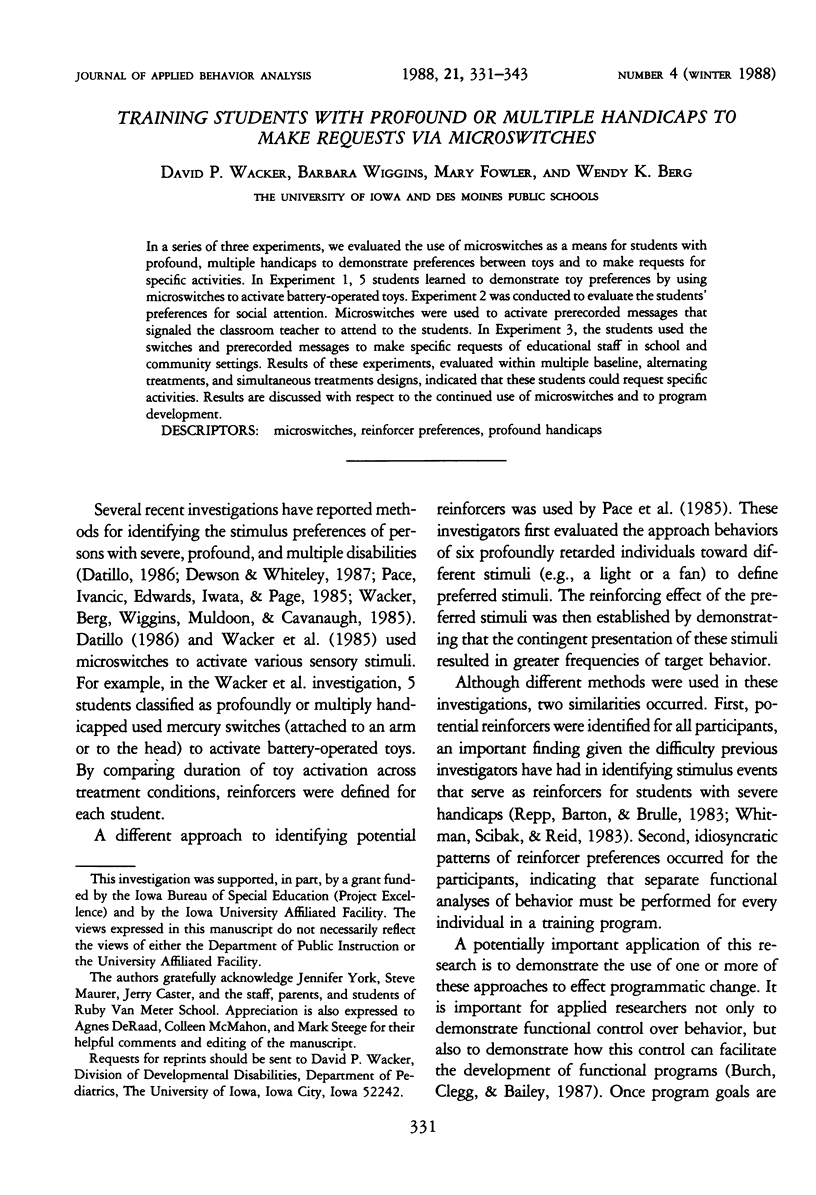
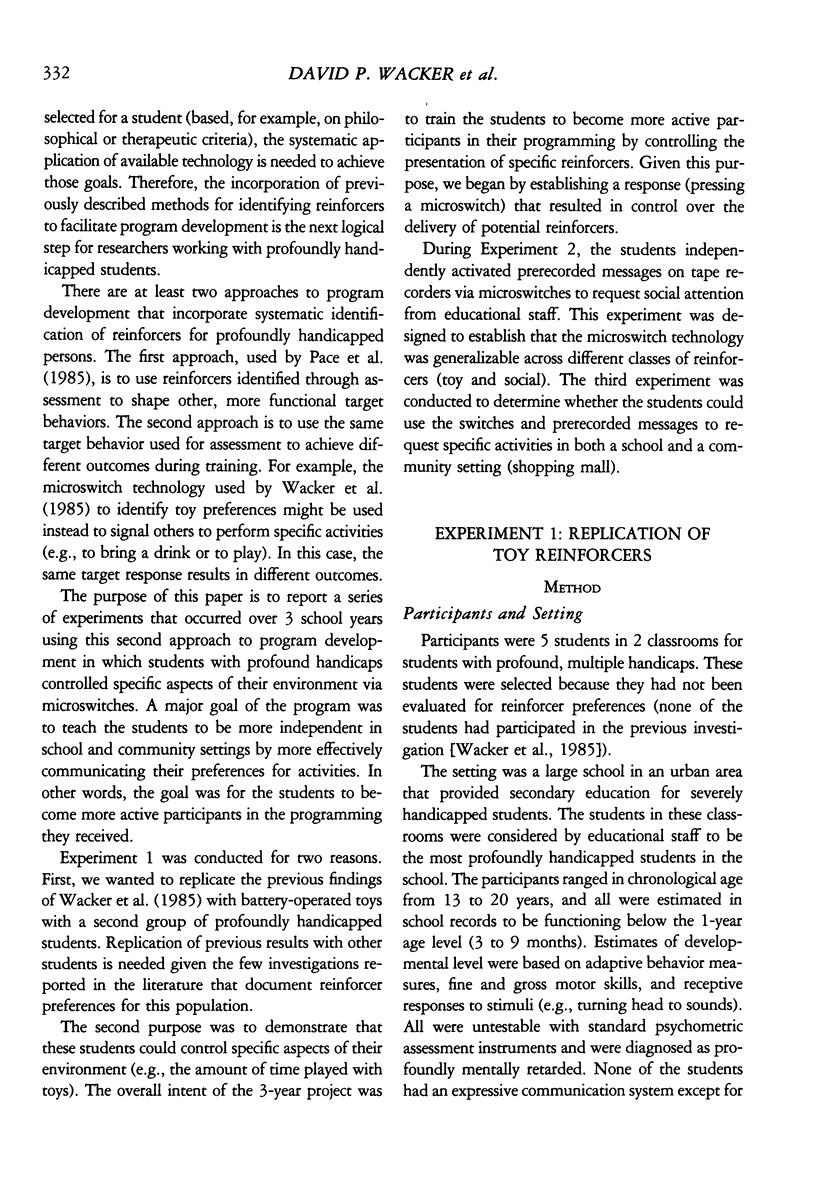


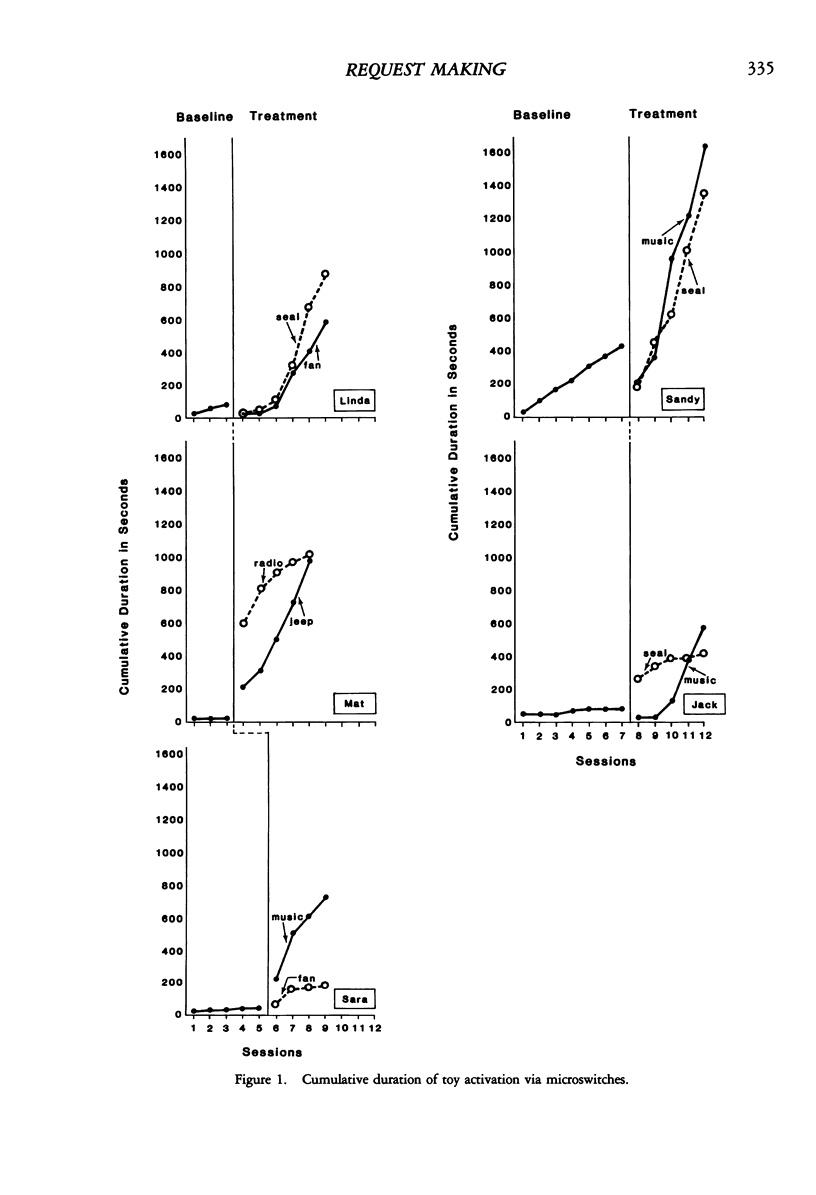
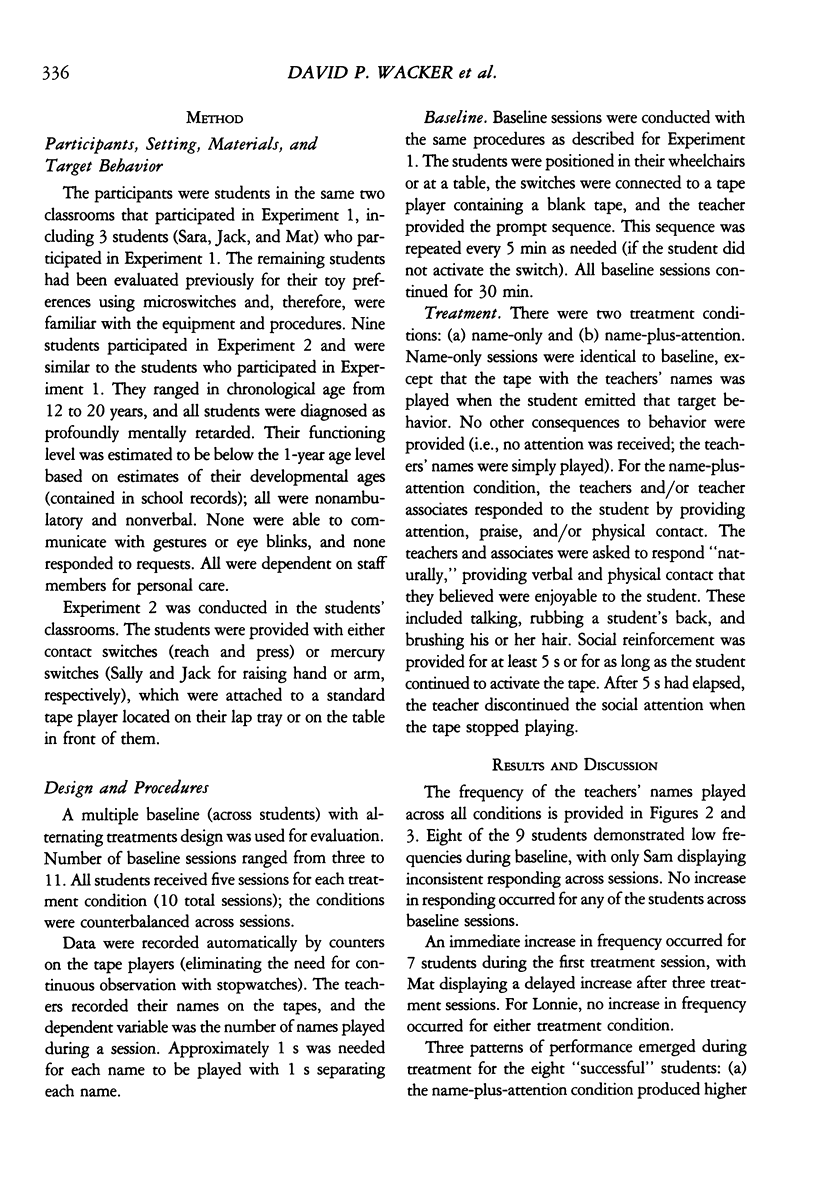
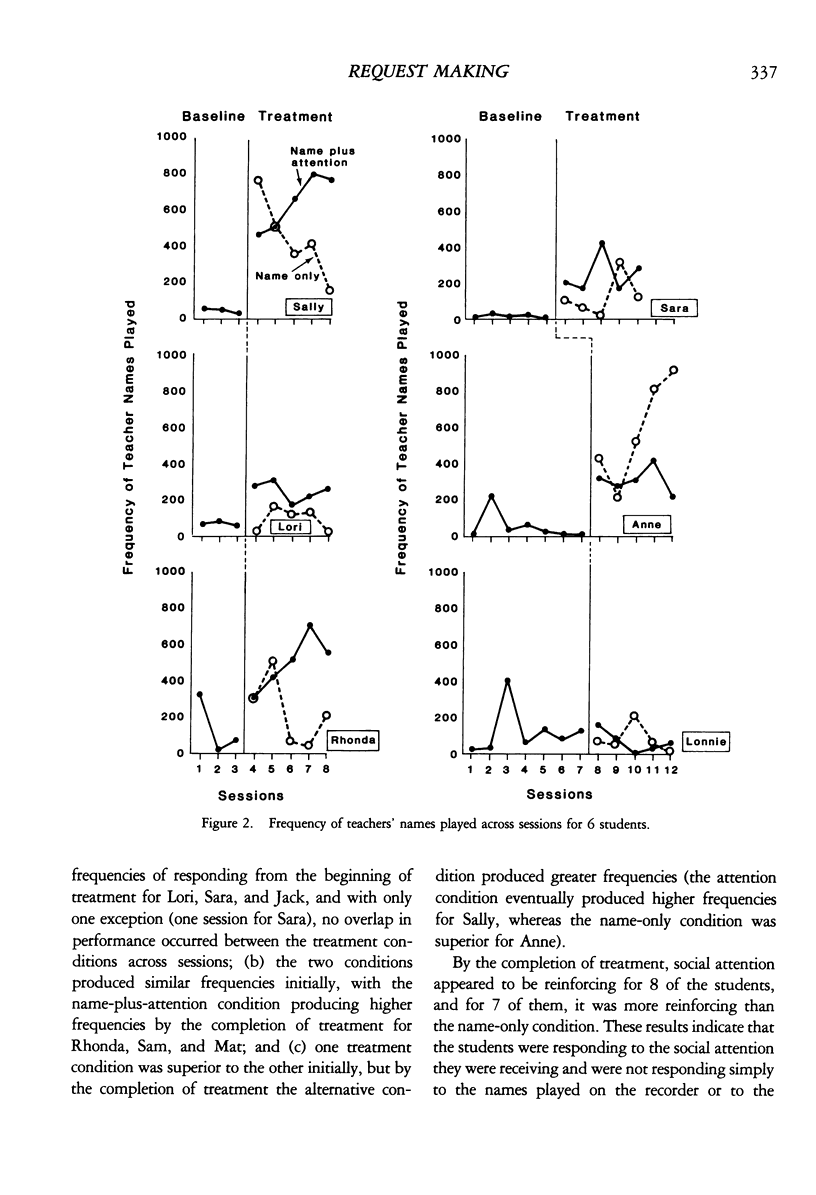
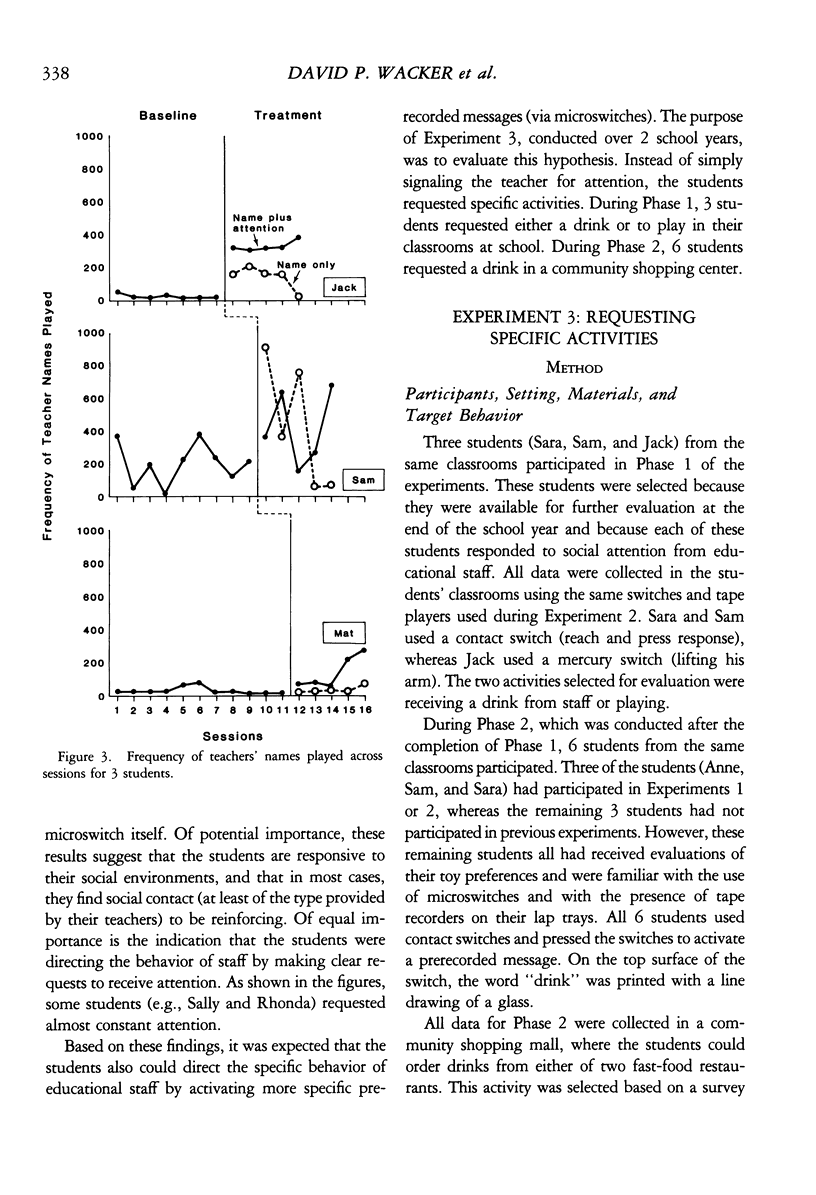
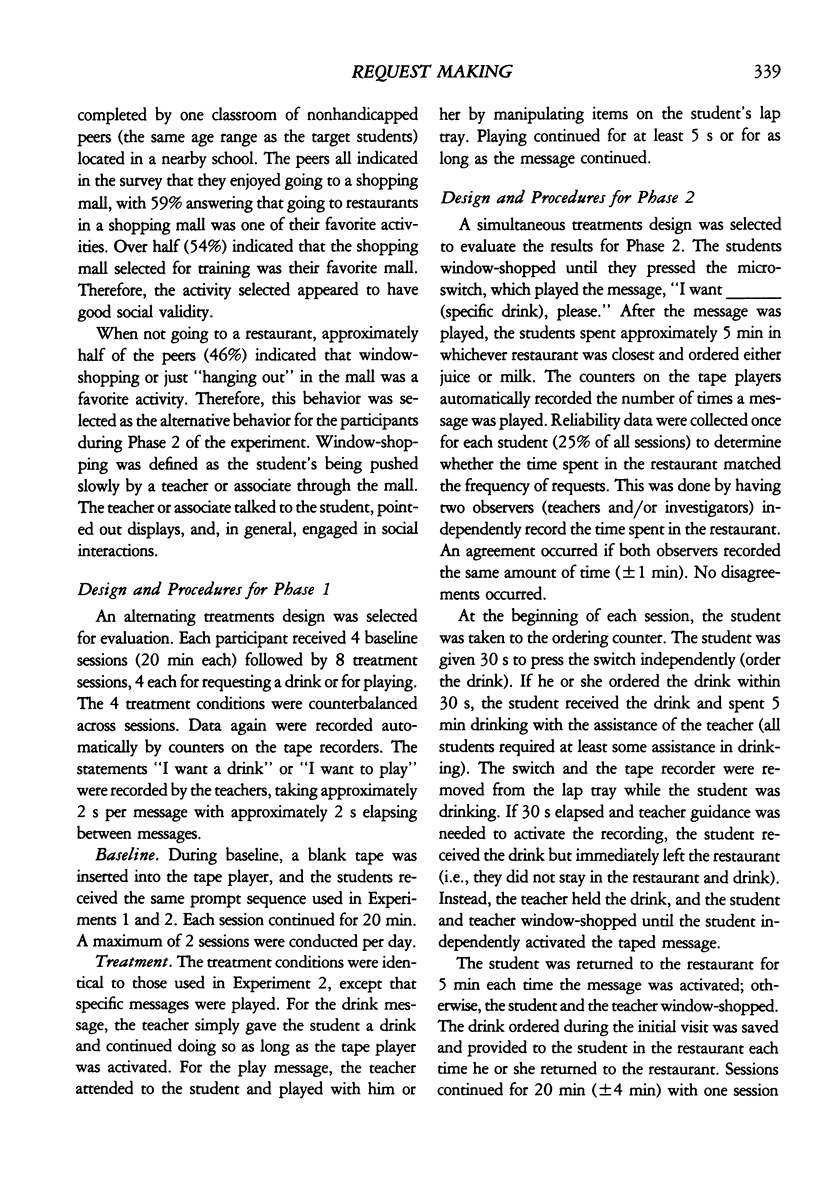
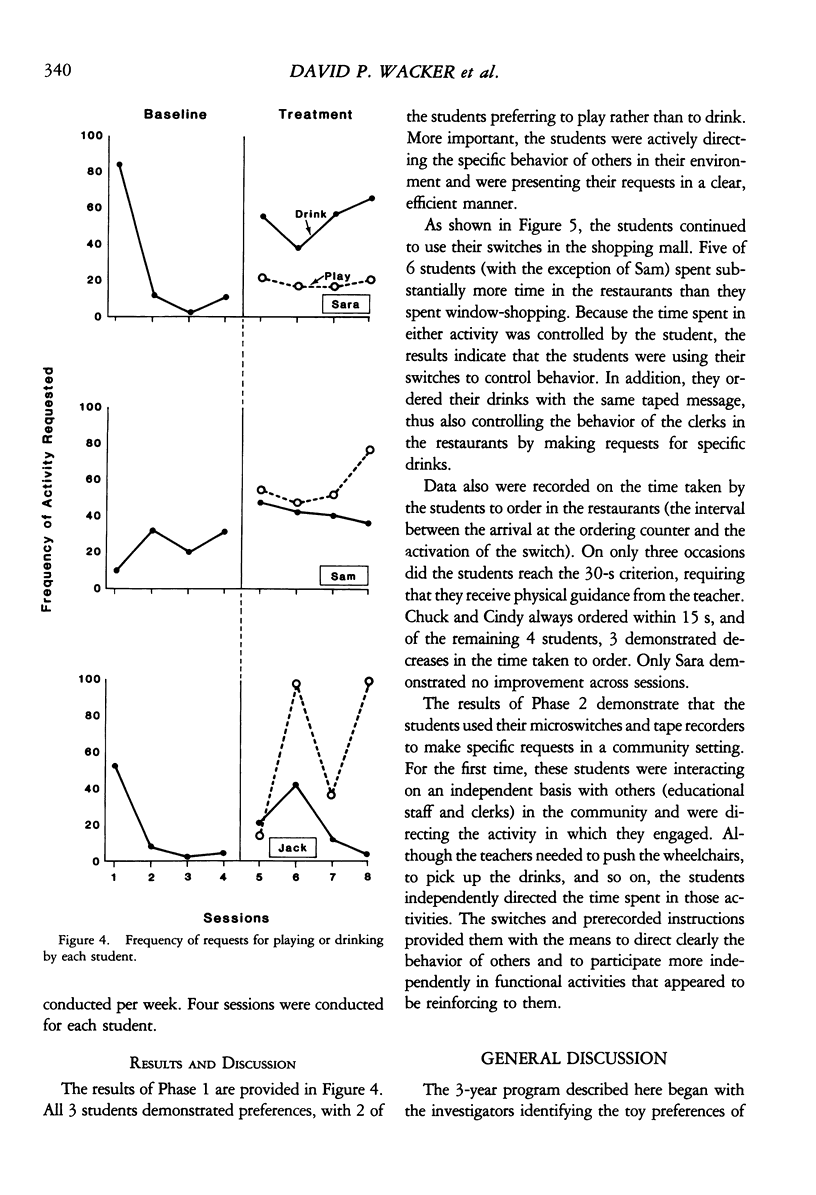
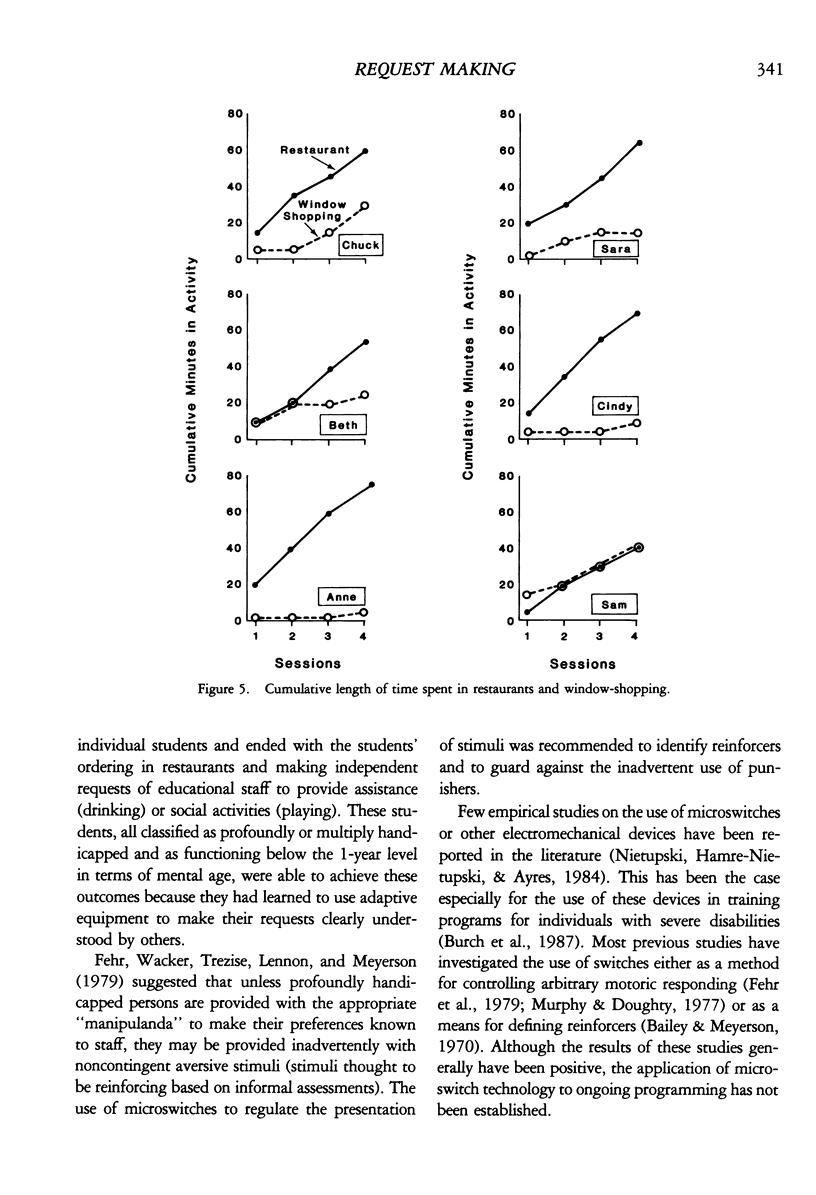
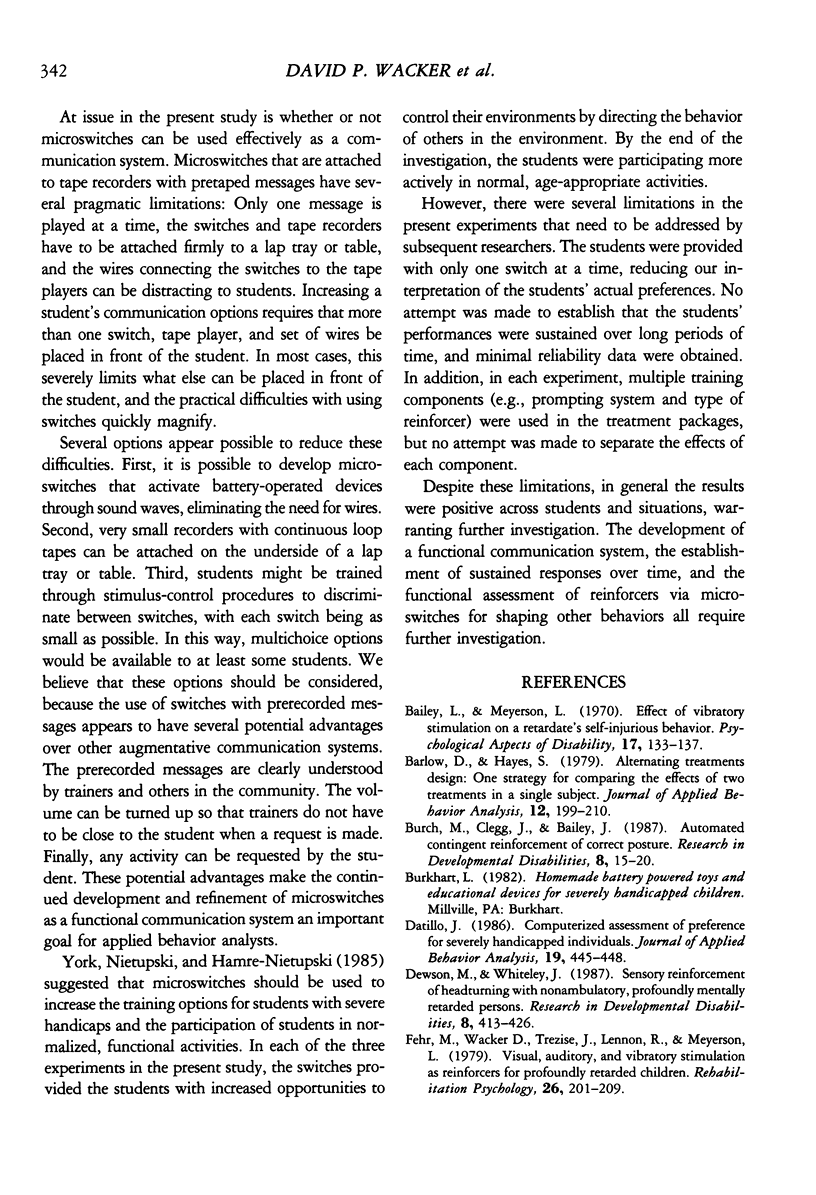
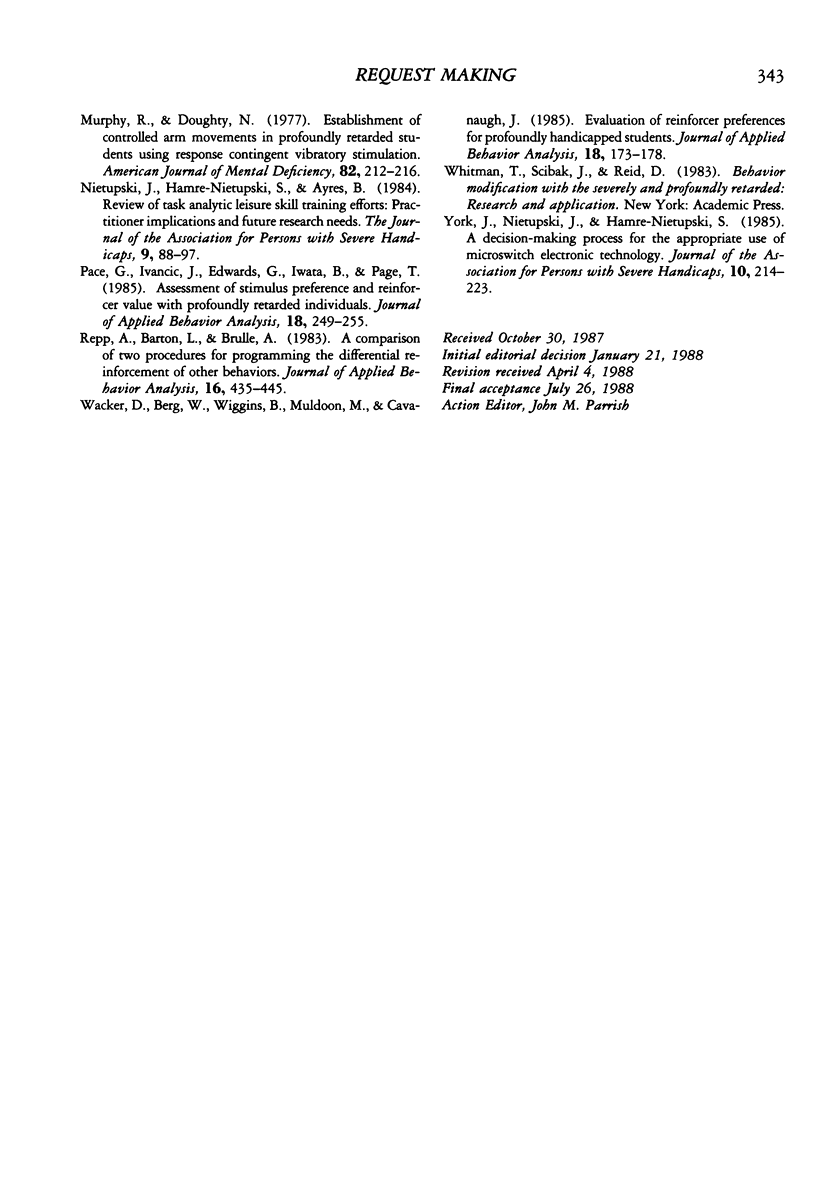
Selected References
These references are in PubMed. This may not be the complete list of references from this article.
- Barlow D. H., Hayes S. C. Alternating treatments design: one strategy for comparing the effects of two treatments in a single subject. J Appl Behav Anal. 1979 Summer;12(2):199–210. doi: 10.1901/jaba.1979.12-199. [DOI] [PMC free article] [PubMed] [Google Scholar]
- Burch M. R., Clegg J. C., Bailey J. S. Automated contingent reinforcement of correct posture. Res Dev Disabil. 1987;8(1):15–20. doi: 10.1016/0891-4222(87)90037-0. [DOI] [PubMed] [Google Scholar]
- Dattilo J. Computerized assessment of preference for severely handicapped individuals. J Appl Behav Anal. 1986 Winter;19(4):445–448. doi: 10.1901/jaba.1986.19-445. [DOI] [PMC free article] [PubMed] [Google Scholar]
- Dewson M. R., Whiteley J. H. Sensory reinforcement of head turning with nonambulatory, profoundly mentally retarded persons. Res Dev Disabil. 1987;8(3):413–426. doi: 10.1016/0891-4222(87)90023-0. [DOI] [PubMed] [Google Scholar]
- Murphy R. J., Doughty N. R. Establishment of controlled arm movements in profoundly retarded students using response contingent vibratory stimulation. Am J Ment Defic. 1977 Sep;82(2):212–216. [PubMed] [Google Scholar]
- Pace G. M., Ivancic M. T., Edwards G. L., Iwata B. A., Page T. J. Assessment of stimulus preference and reinforcer value with profoundly retarded individuals. J Appl Behav Anal. 1985 Fall;18(3):249–255. doi: 10.1901/jaba.1985.18-249. [DOI] [PMC free article] [PubMed] [Google Scholar]
- Repp A. C., Barton L. E., Brulle A. R. A comparison of two procedures for programming the differential reinforcement of other behaviors. J Appl Behav Anal. 1983 Winter;16(4):435–445. doi: 10.1901/jaba.1983.16-435. [DOI] [PMC free article] [PubMed] [Google Scholar]
- Wacker D. P., Berg W. K., Wiggins B., Muldoon M., Cavanaugh J. Evaluation of reinforcer preferences for profoundly handicapped students. J Appl Behav Anal. 1985 Summer;18(2):173–178. doi: 10.1901/jaba.1985.18-173. [DOI] [PMC free article] [PubMed] [Google Scholar]


